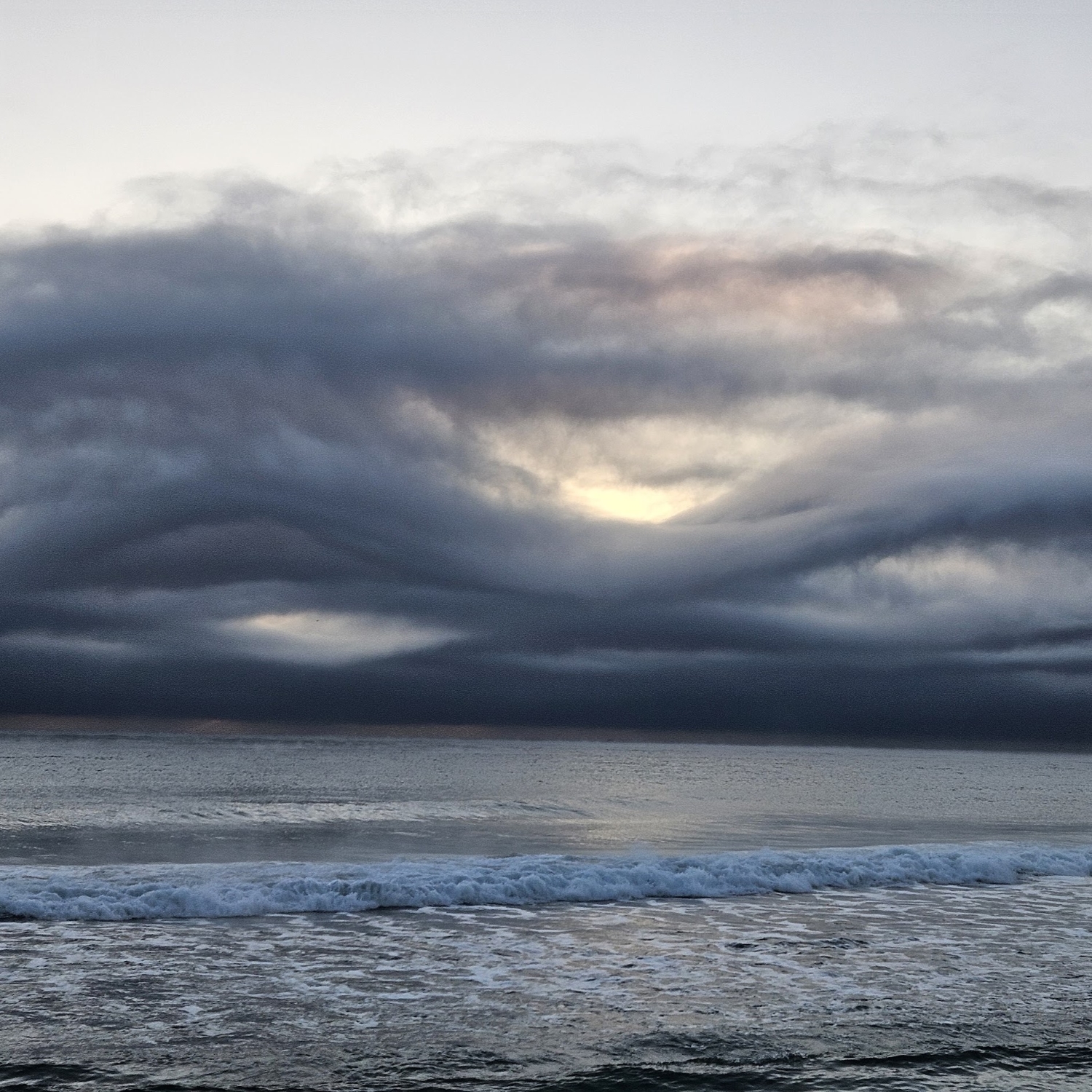Stratocumulus asperitas clouds, like these spotted by Ray Popkin (Member 63,500) from South Florida, US, are characterised by turbulent waves that look like the surface of a rough sea. Forming in the low cloud Stratocumulus, these particular asperitas appeared like heavy-lidded eyes looking right back at Ray. Asperitas may look ominous and stormy, but they usually dissipate quite harmlessly. The wavy features, which can also appear in the mid-level cloud Altocumulus, are formations close to the Cloud Appreciation Society’s heart.
Thanks to the collective citizen science of our members, asperitas was recognised as a ‘new’ classification by the World Meteorological Organization when they added it to the International Cloud Atlas in 2017 following our campaign for it to become an official cloud type. Asperitas cloud features weren’t really new, however. Though they’re rare, they’ve always been around, in our opinion. It just took the upturned eyes of cloudspotters across the globe to recognise that their distinctive forms deserved a name of their own.



